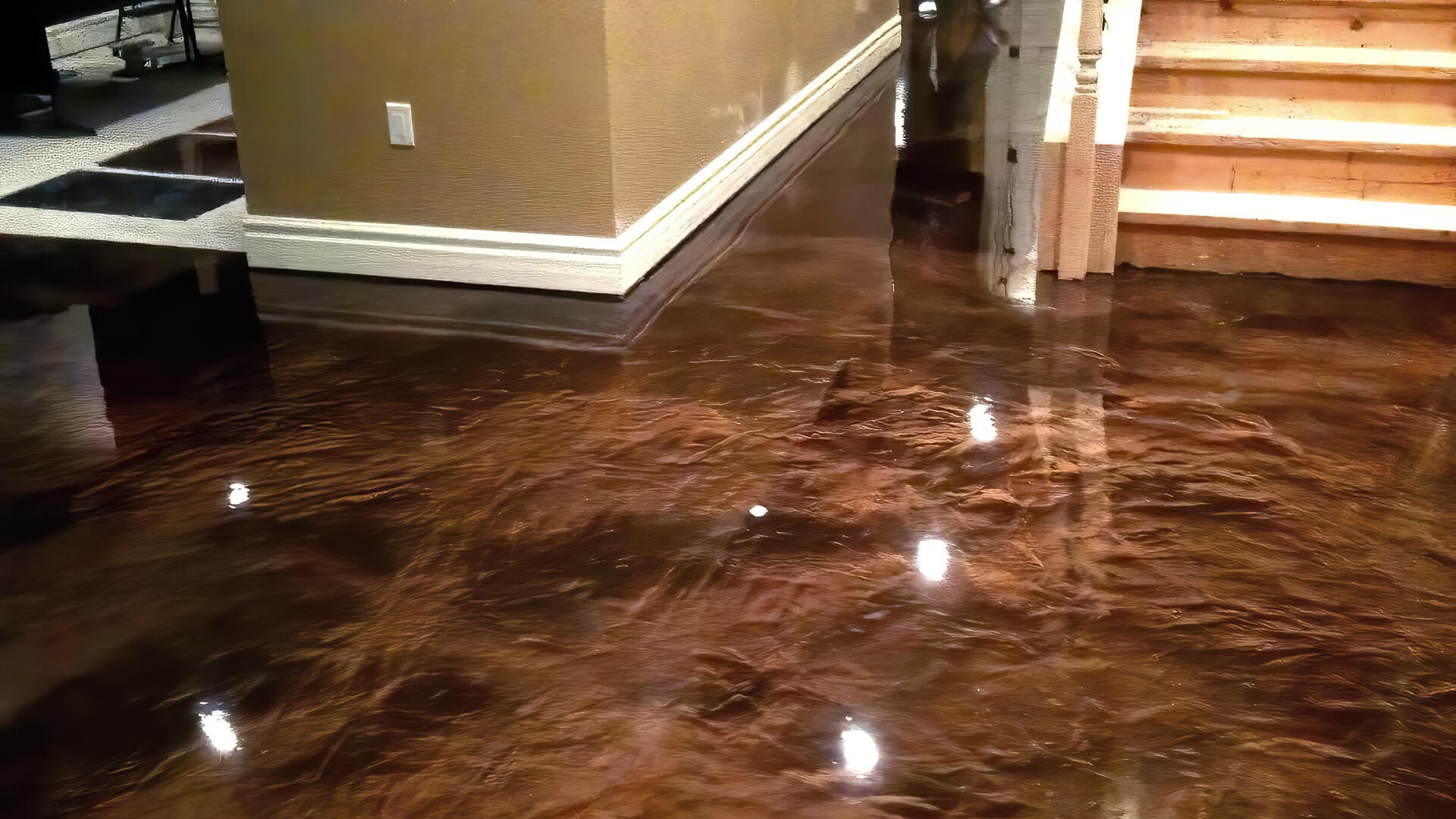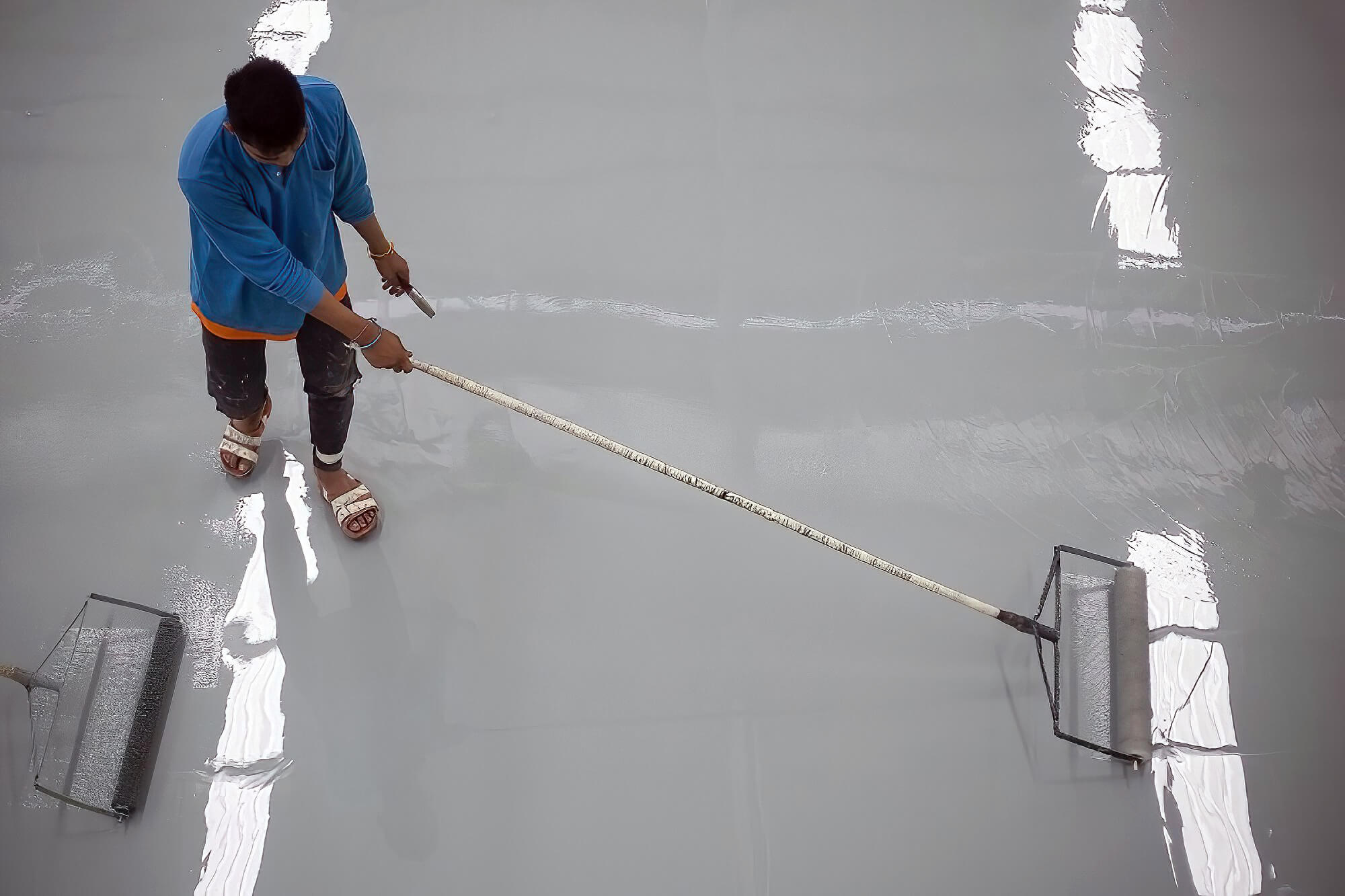7 Things to Consider Before Applying An Epoxy Floor

While planning a DIY project, we often skip reading the instructions provided with the project equipment/components.
If you do the same with epoxy floor coating, you may soon find the epoxy floors peeling off; beginners sometimes make mistakes that weaken or destroy the epoxy resin.
We are always very interested in such DIY projects and want to ensure you do the process right. So, here is a guide about some considerations before applying epoxy. If you keep all of the following points in mind, you can get a beautiful, glossy floor coating without any imperfections.
Read on to learn all about it.
7 Things To Consider Before Applying Epoxy Floor Coating
The versatility, chemical resistance, and longevity are why epoxy floor coating is becoming increasingly popular. It is essential to know a few things before considering epoxy floor coating for your garage floor or workshop to ensure you are prepared and satisfied with the results. Before applying epoxy floor coatings, here are seven things to remember.
1. Understand Your Purpose Why You Need An Epoxy Coating
You can customise epoxy flooring according to your needs. For example, epoxy floor coating is required in automotive showrooms to be attractive and durable enough to withstand normal pressure from large vehicles. To protect the building’s structure and the concrete beneath the epoxy flooring, industrial kitchens, your garage, and bathrooms may need moisture and chemical resistance.
As a result, when applying epoxy coatings, you should always consider their purpose before proceeding with any project.
2. Choose The Right Type of Epoxy Resin
It is essential to keep in mind that epoxy resin is not a one-size-fits-all product. For your epoxy project to succeed, you must first research what sort of resin, product, and material is suitable for your space.
There are several reasons why epoxy resin is a popular flooring choice, but one of the most important is that each type of epoxy resin is tailored to specific spaces, needs, and designs. To choose the best epoxy solution, you should research garage floor coating, basement floor coating, concrete floor paint, or even epoxy floor coatings for levelling a floor.

3. Check The Reflectiveness of Your Epoxy Coatings
With epoxy coatings, you can illuminate job sites without additional lighting. Because epoxy coatings are highly reflective, they can reduce electric overhead lighting costs and make the complex job safer and more accessible for workers.
4. Measure The Epoxy Products Accurately
If you want your epoxy to cure properly, you must carefully measure your resin and hardener. Calculate the volume of elements needed for your application. Start small. If you need more epoxy resin during this stage, create another batch to distribute it equally. You can use a graduated measuring cup to measure the resin. Look for the point where the bottom of the curved liquid surface, known as the meniscus, meets the line where you will pour the epoxy.
It would be best to wait for the epoxy to cool for a few moments before determining how much hardener to add. If the epoxy is warm, it will lay flat in the graduated measuring cup; however, it should cool before deciding how much hardener to apply. Once the epoxy mixture has been appropriately measured, pour the hardener into it. Most epoxy systems require a 2:1 volume ratio. It means that you need two parts of epoxy for every part hardener.
Please remember that this is not a universal epoxy scale. Some manufacturers may specify other proportions, and you can double-check the ratio by referring to the epoxy’s instructions. Ensure the location, substrate, and epoxy you are handling remain at 21-24°C before combining products.

5. Ensure that the Epoxy Resin Is Properly Mixed
The right way to do this is to thoroughly stir the two epoxy ingredients for one to three minutes or until the products have a uniform consistency. As you mix, scrape the sides and bottom of your container, and make sure the flat end of your mixing tool reaches all corners. It would be best if you immediately poured the epoxy onto a roller pan to extend its pot life and working time.
When mixing epoxy for the first time, start with a small batch to get a feel for mixing and curing. Place the epoxy resin and hardener in a clean, wax-free plastic, metal, or paper container. Do not use glass or foam containers to avoid dangerous exothermic heat build-up.
Keeping an eye out for too many air bubbles in your epoxy mix will increase the likelihood of your epoxy coating having air bubbles in the future. The more air bubbles you have, the greater the chance your epoxy coating has air bubbles in it.
6. Avoid Non-sealed Materials That Emit Bubbles
If you plan to apply epoxy on top of wood, concrete floor, or other porous surfaces, you must first use a sheer coat of epoxy. Sealing a porous material with a thin layer prevents air from escaping. Let your sheer epoxy dry for at least 6 hours after applying it.
7. Quickly Torch Out The Emerging Bubbles Before The Epoxy Hardens
Epoxy formulations often contain a degassing agent, which causes bubbles to rise to the surface. If bubbles develop after epoxy floor coating is applied, you must be ready to torch the resin before it hardens and solidifies. You can use a low-heat heat gun to remove bubbles from the surface. It is always best to point the heat gun at an angle on the bubbles rather than straight down.
Get The Job Done By Hiring A Professional
Everyone has to begin somewhere when learning something new; it is okay to do so. Once you know how to apply epoxy resin correctly, you’ll see it’s quite a simple process.
Making sure you consider these factors will prevent you from making mistakes that could result in the degradation of your epoxy resin. Take your time with your endeavours, and don’t rush. It’s best to get to know the fundamentals of epoxy flooring space and to start small. In addition to avoiding missteps, this consideration will ensure that your epoxy flooring applies nicely without wasting extra epoxy or time.
Whether starting a new business, working as a flooring contractor, a craftsman, an artist, a homeowner, or a DIY enthusiast learning epoxy flooring, Top Coat Concrete is here to help you achieve your goals.
No matter the properties of your concrete, our team of experts, knows that each slab must be treated differently. On top of that, we know how frequently those unforeseen complications occur after hours while still on site. Getting beautiful concrete or epoxy flooring finishes requires immediate support.
Our top-of-the-line concrete product supply and industry expertise are accessible to professionals and do-it-yourselfers. Our professionals are happy to discuss all your project concerns to assist you each step of the way, from start to finish.
Contact us today for all your epoxy or polished concrete flooring needs!
Newsletter
Sign up to our flooring, epoxy and concrete blog newsletter and get all the latest news, tips and tricks from the industries best in Sydney.
Related Articles

5 Common Mistakes To Avoid When Applying Epoxy
Making your first epoxy application but worried about making a mistake? Using epoxy can be tricky, so here are some tips to avoid mistakes.

Your DIY Guide to Resealing Concrete Driveway
Are you looking for a DIY guide to help you reseal your driveway? Know the proper way on how to reseal your concrete driveway in this article.

Epoxy Kitchen Floor Ideas For Your Home
Are you looking for some epoxy floor inspiration for your kitchen? Our comprehensive guide is filled with innovative ideas, so check it out!